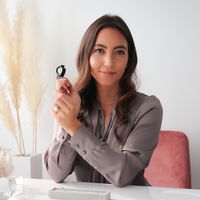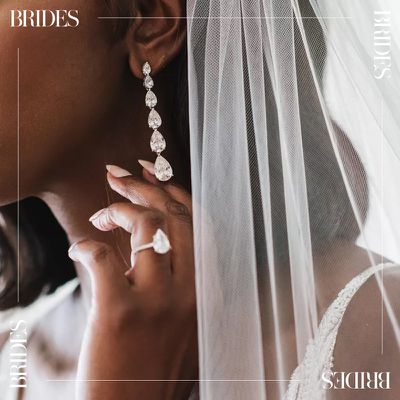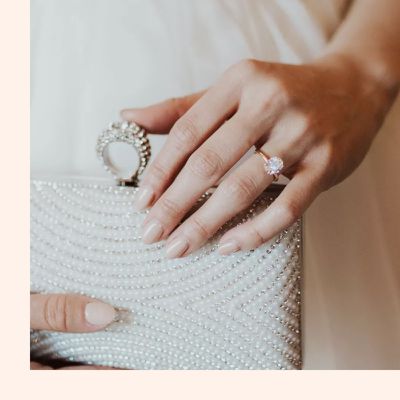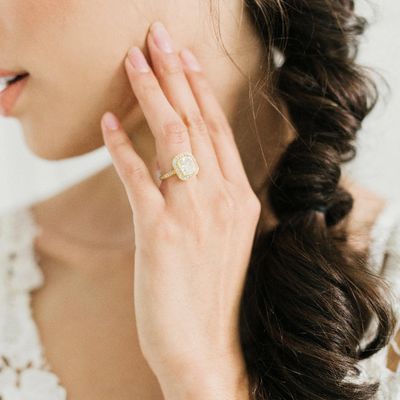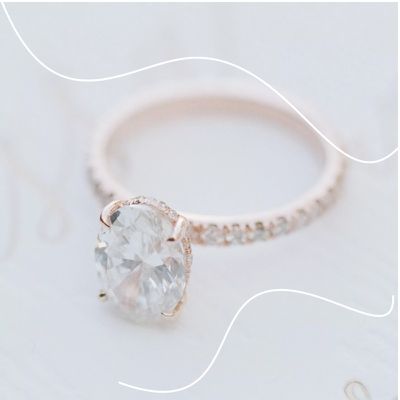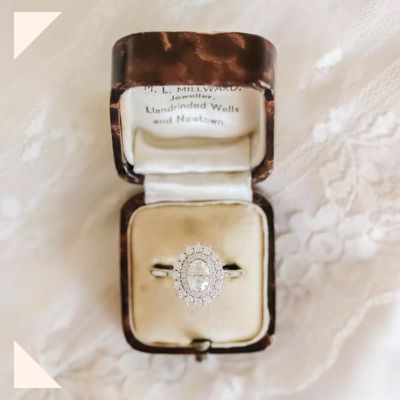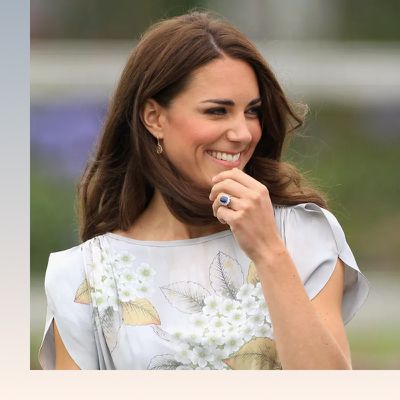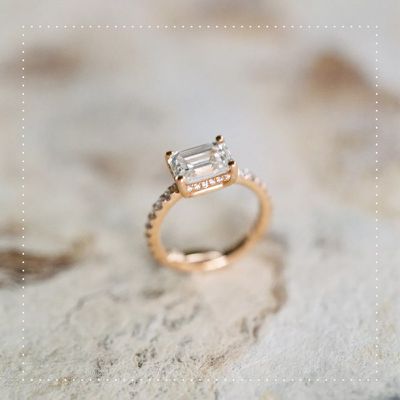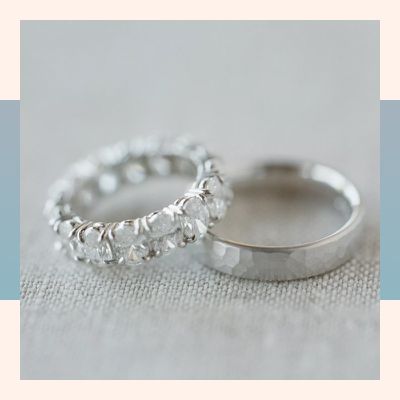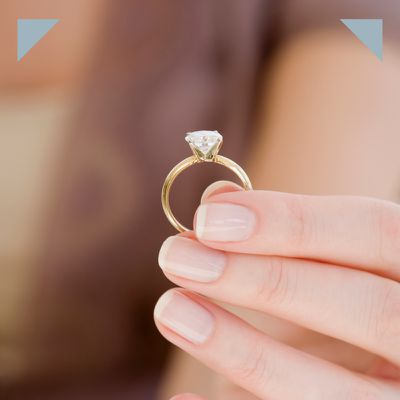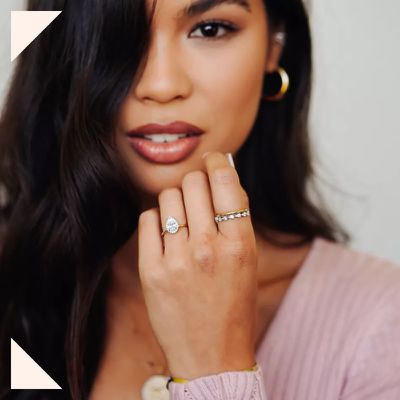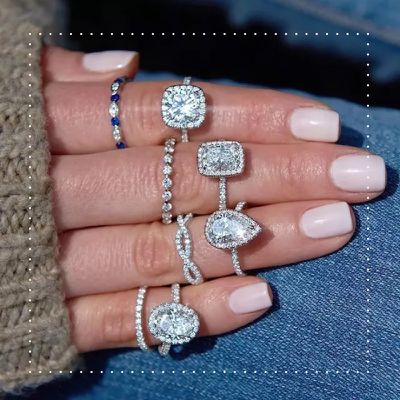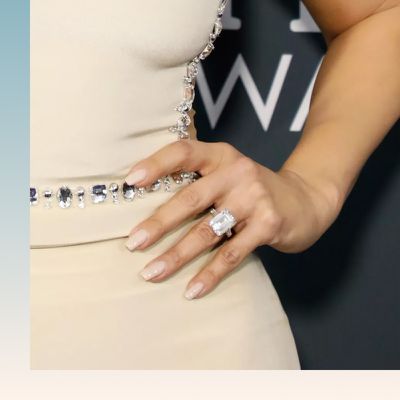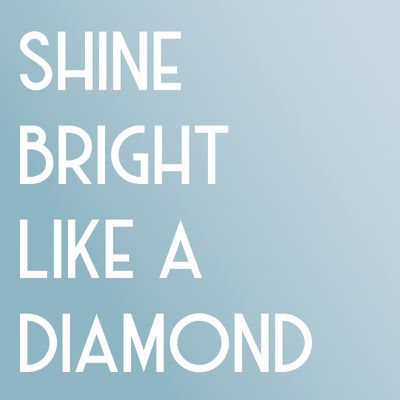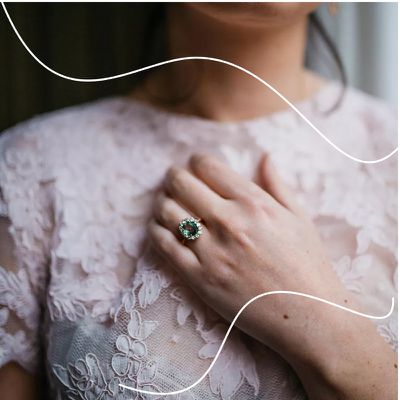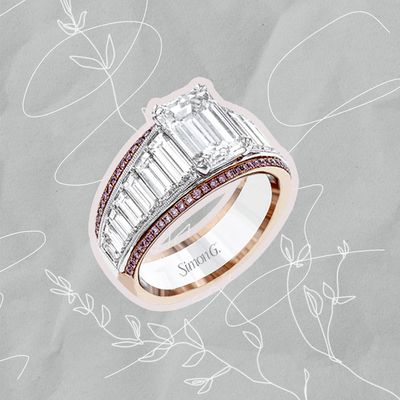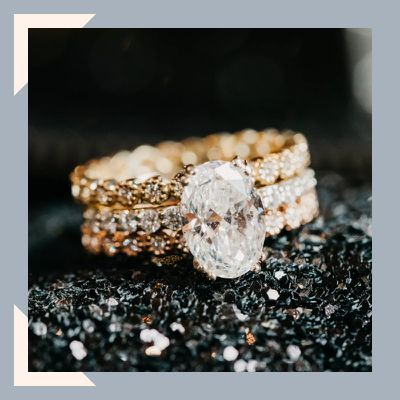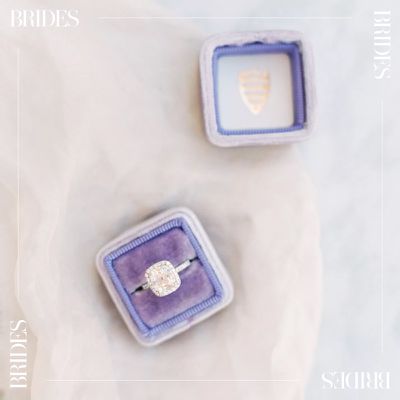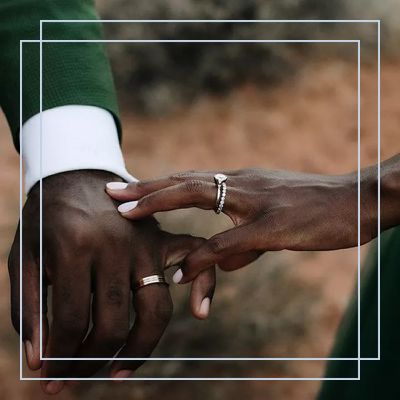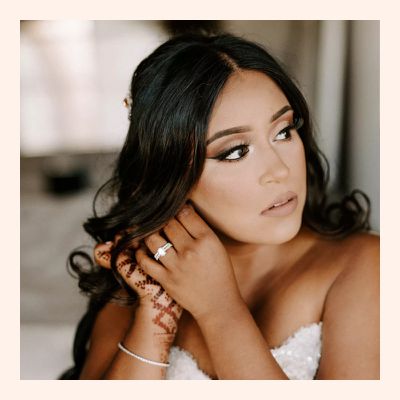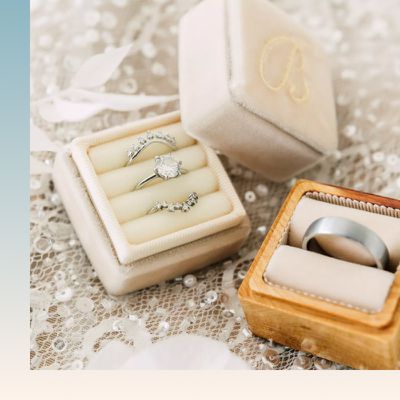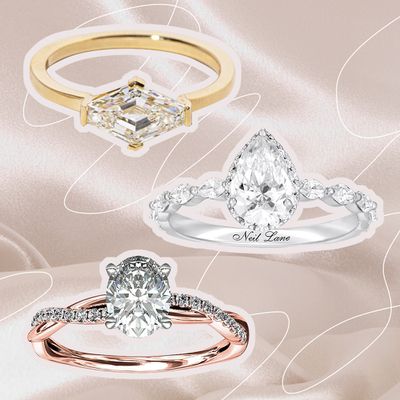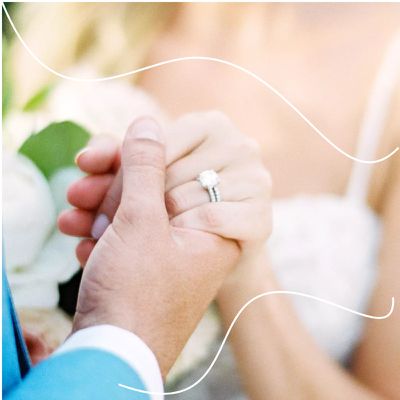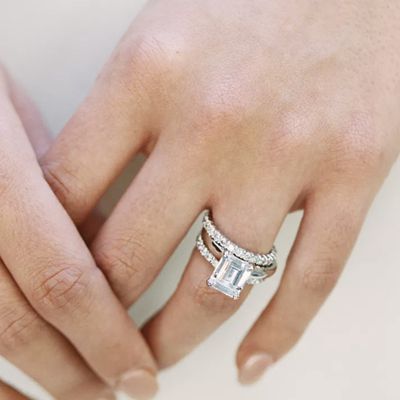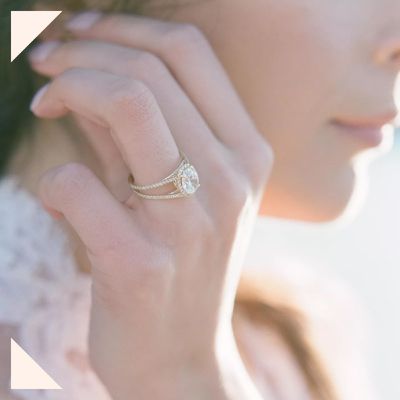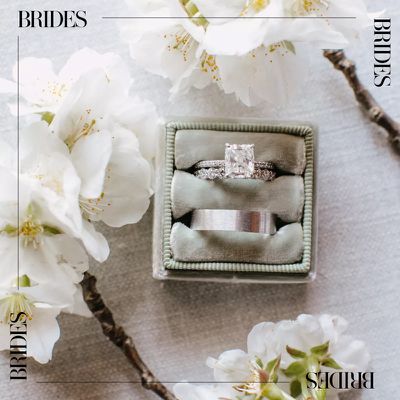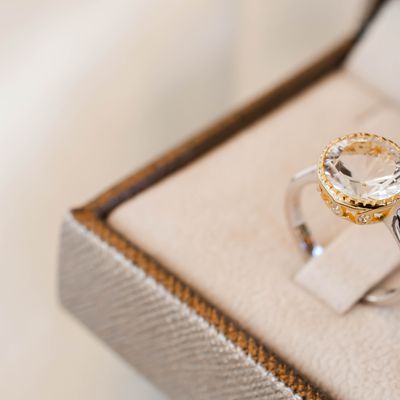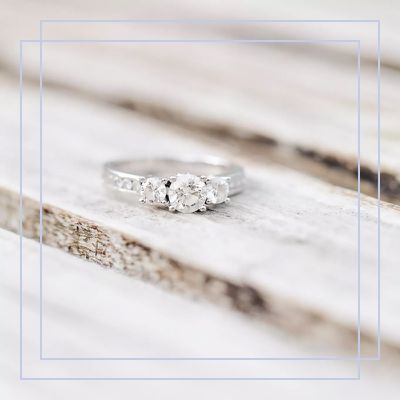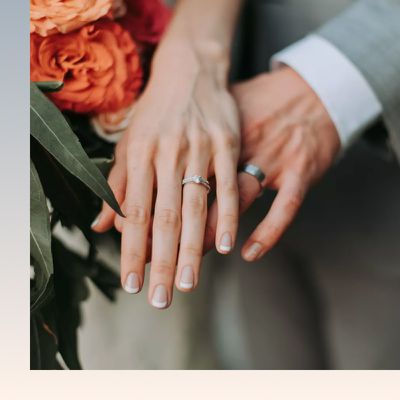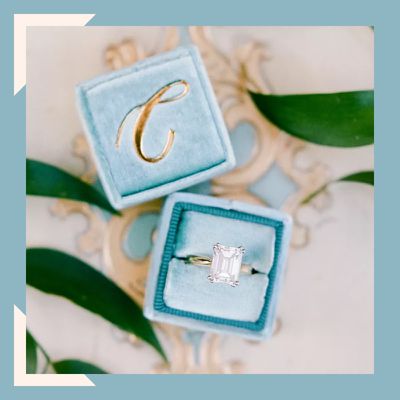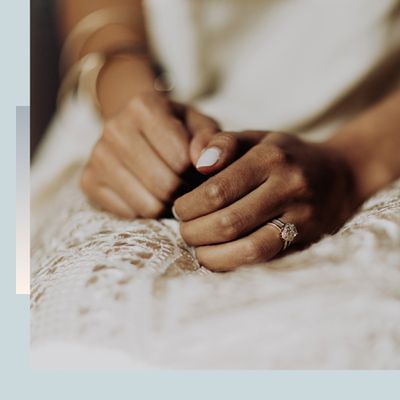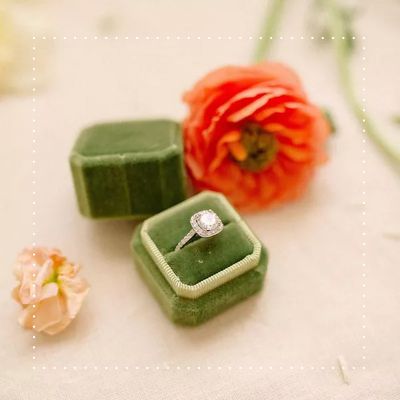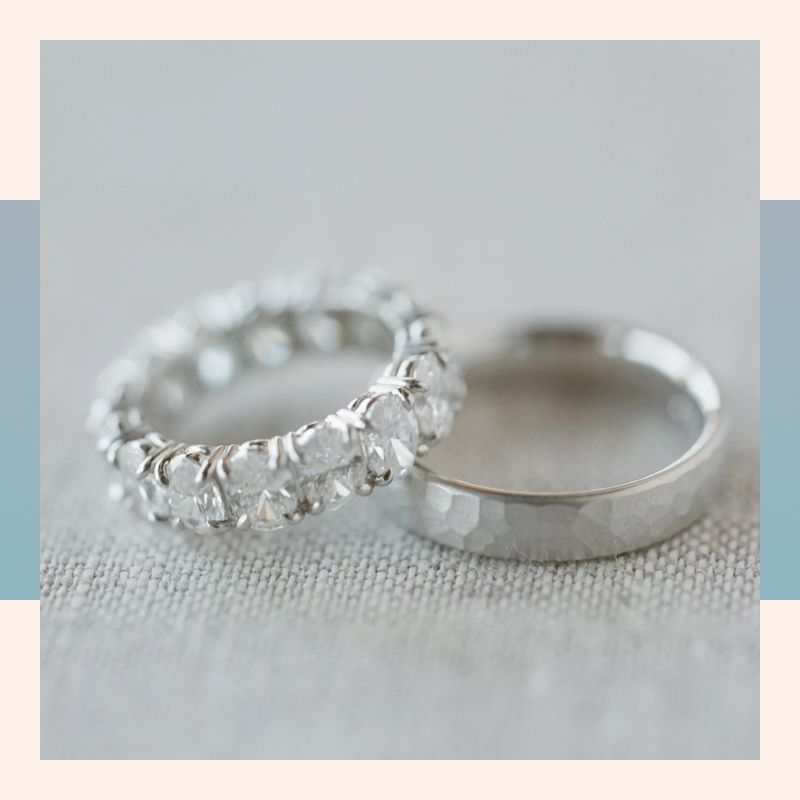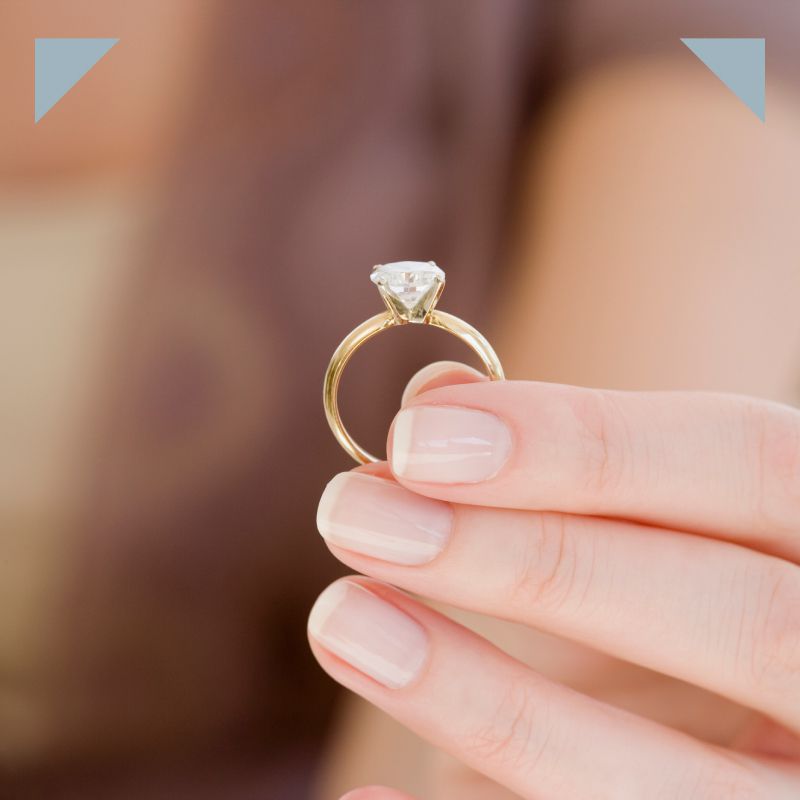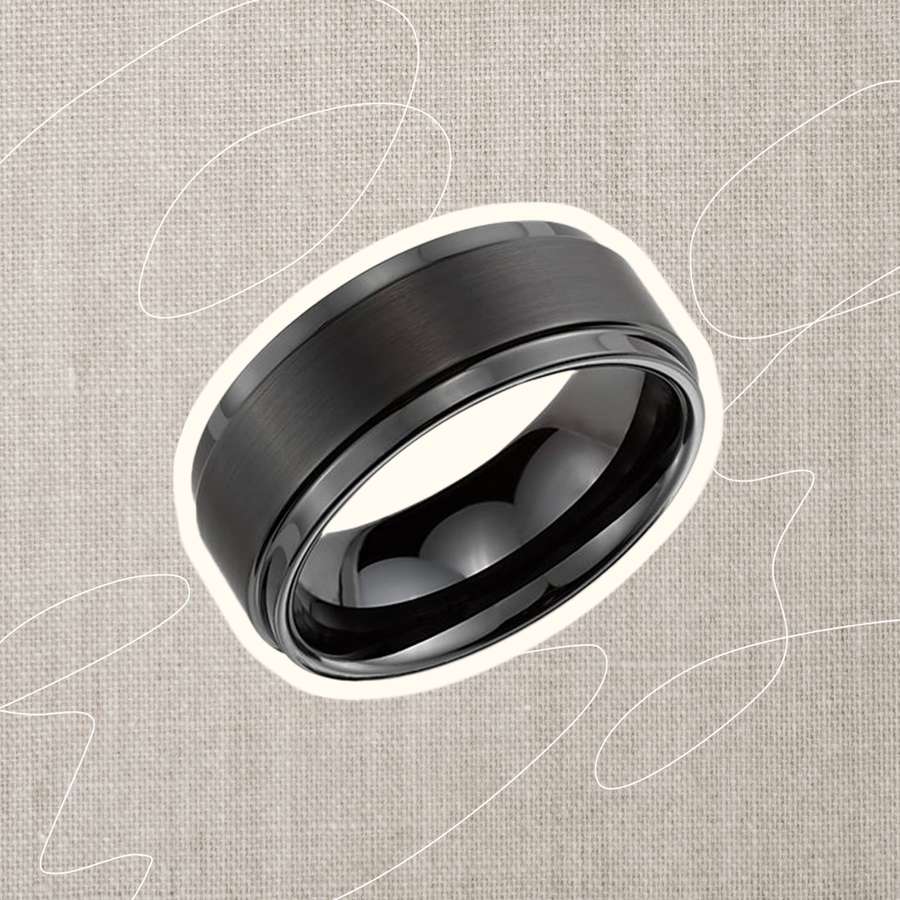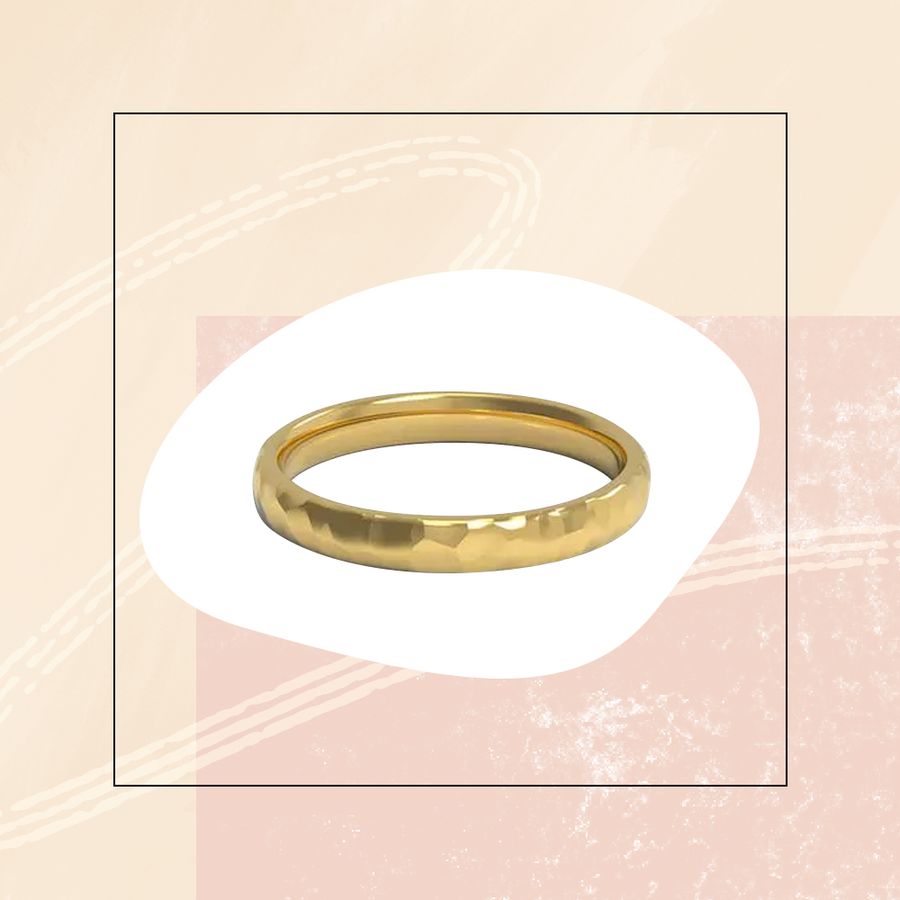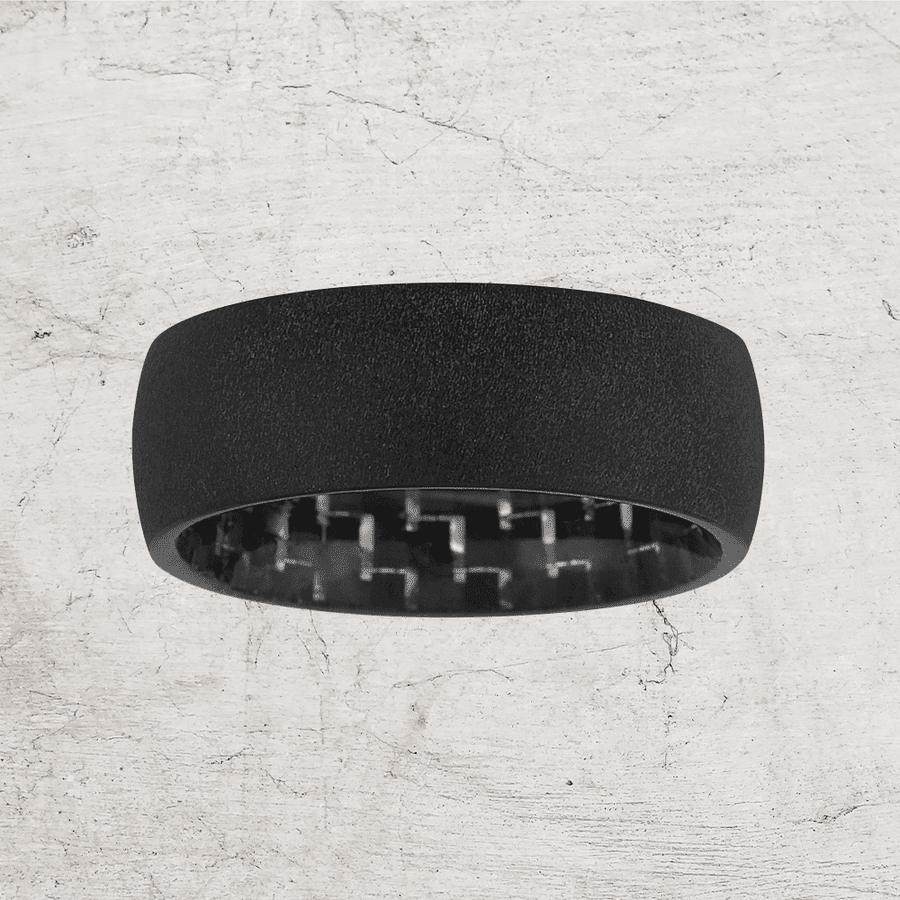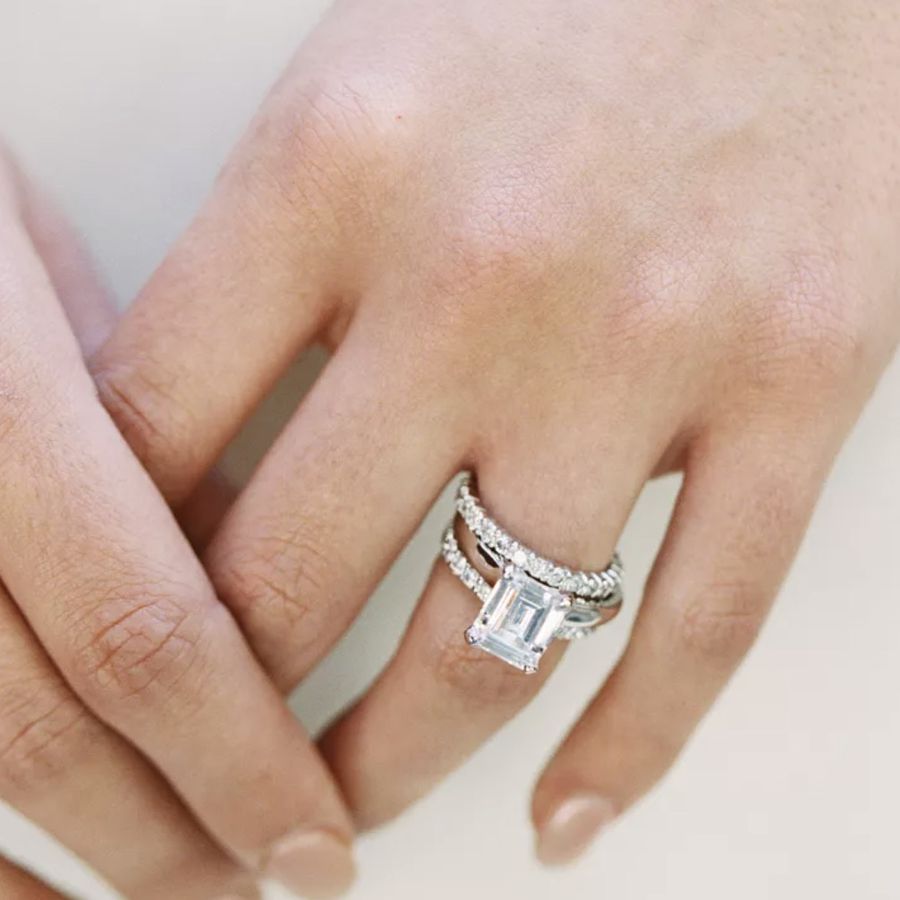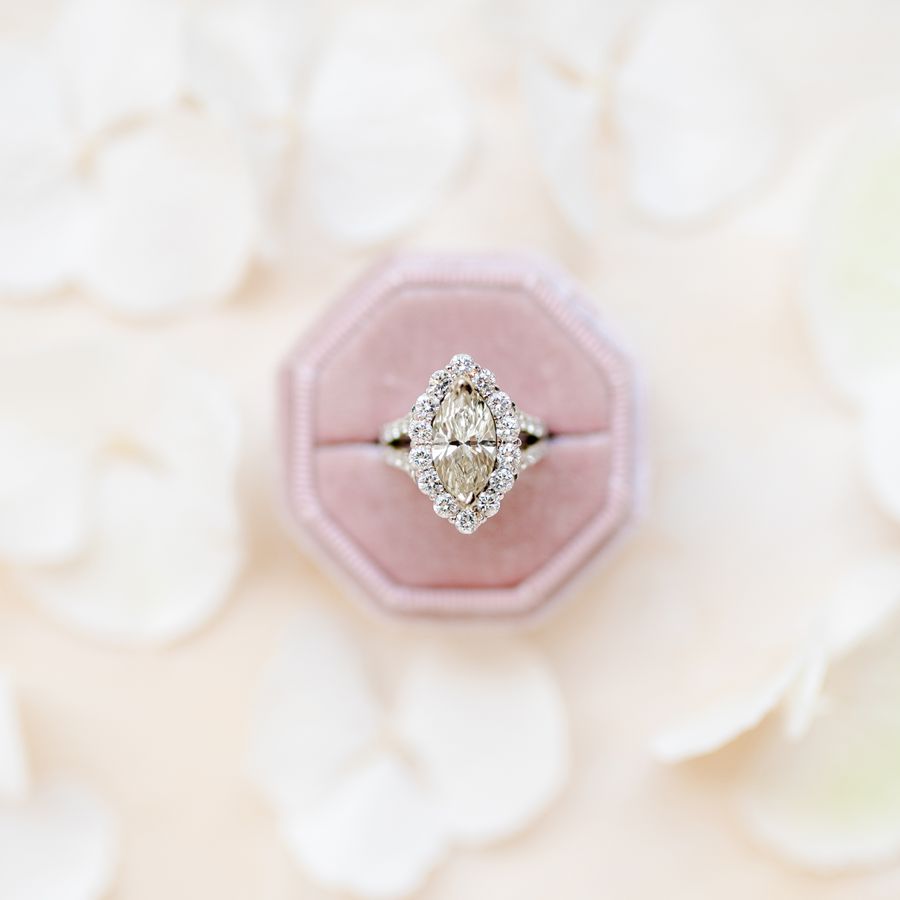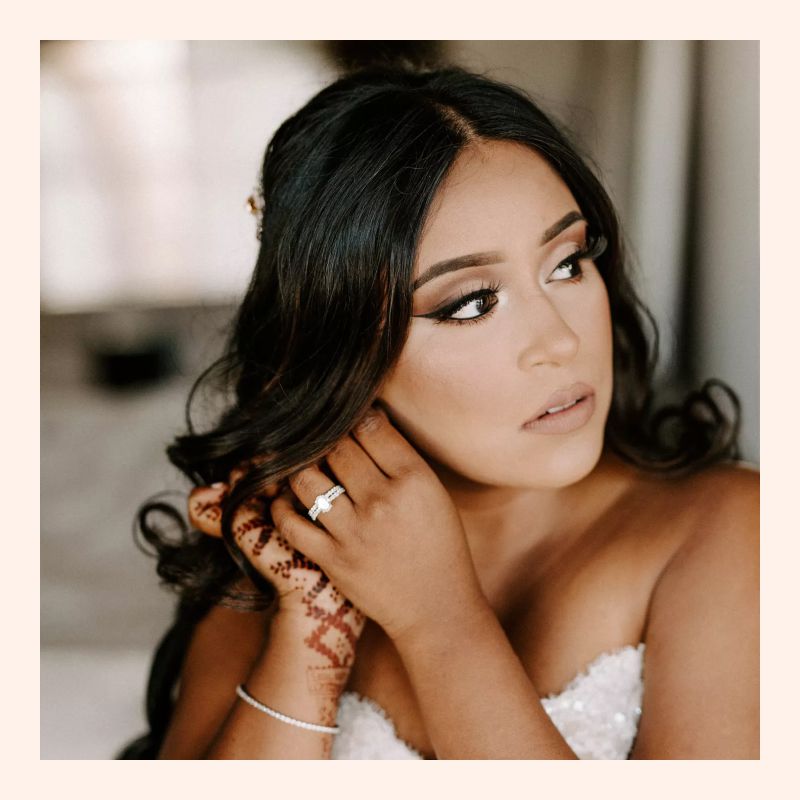:max_bytes(150000):strip_icc()/sq-b609e1c6078c460abc25857ae151bf2e.jpg)
Photo by Branco Prata
Since your engagement ring will be a constant symbol of your marriage, it's of the utmost importance that you have an accurate measurement of your ring size before your partner pops the question. Sure, you can leave it up to chance and let your significant other buy a sparkler based on an educated guess, but why take the chance when you can easily figure out your ring size right at home or with the help of a professional?
Truthfully, ring sizing should seldom be a guessing game, which is why we checked in with engagement ring experts Taylor Lanore and David Borochov to explain the best ways to determine the perfect ring size for your wedding bauble. Plus, we provide tips on how to get your engagement ring resized if you already have your sparkler.
Meet the Expert
- Taylor Lanore is a former diamond consultant for Lauren B. Fine Jewelry and Diamonds, and the founder of Lanore Fine Jewelry
- David Borochov is the manager of R&R Jewelers in New York City.
Factors That Impact Engagement Ring Sizing
Several factors can affect your ring size, such as the environment, your finger shape, your bauble's band width, and international sizing charts, which the experts explain below.
Environment and Activity
Believe it or not, in order to determine your ring size, your "ring finger measuring conditions" need to be just right. For example, since warm weather makes our fingers swell and cold weather makes them shrink, measuring your finger at the proper temperature is key to getting an accurate number. (In the summer, Borochov even recommends couples take a few minutes to cool down before getting measured, especially if they've been outside in the heat for long periods of time.)
Lanore further advises against eating salty foods, drinking hot cocktails, or performing any strenuous activity before measuring because these can all make your fingers swell. "You want your body temperature to be normal and natural," she says, while also noting that diet, pregnancy, and other biological elements can impact your fingers. What's more, we tend to have swollen fingers when we first wake up, so it's best to get measured around the middle of the day, at room temperature, for the most accurate and comfortable fit.
Finger Shape
Given that we all have different hands, the way your fingers are shaped can impact your ring size and fit. More specifically, rings can easily fall off tapered fingers—fingers that widen downward toward the base, closest to your hand—so those with this shape should measure themselves for a snug fit. On the other hand, individuals with knotted fingers—where the knuckle is the widest part—will need to measure a loose fit and consider adding sizing beads to their sparklers. (These add-ons will prevent your ring from moving around at the base of your finger and will act like pressure points to keep your ring in place).
Band Width
According to Borochov, rings with thinner bands tend to run a bit larger, whereas thicker bands have a more snug fit. The reasoning is simple: The more metal around your finger, the more space it takes up and the tighter it fits. "A thin size six ring will not fit the same as a thick size six ring," says Borochov. So, if you have your heart set on a thin, delicate band (super trendy right now), opt for a slightly smaller ring size.
International Ring Sizing
In the United States and Canada, ring sizes range from three to 13, which includes half and quarter sizes; the sizes are measured in inches or millimeters based on the ring's diameter (the inside length of the ring) or circumference (the length of the entire band). While international ring sizing involves the same measurement process, the numbered sizes run on different scales, which vary by country. Australia and the United Kingdom even use an alphabetical letter sizing system.
How to Measure Your Ring Size at Home
If you want to take matters into your own hands (er, fingers), you can use a few different at-home measurement methods, including our printable size guide, to determine your diameter and circumference fit.
:max_bytes(150000):strip_icc()/__opt__aboutcom__coeus__resources__content_migration__brides__public__brides-services__production__2017__11__03__59fc7d79ef7a697b076b9a41_Brides20Ringguide-015B15D-b84569904e394e8fb0cdeac77102b1e3.jpg)
Printable Ring Sizer Technique
To use our printable sizer, print and cut out the ring sizer at the bottom of the size guide, and make sure that the guide is printed to scale by measuring the above diameters against a ruler for accuracy. Cut the slot marked at the end of the sizer, wrap it around the base of your left ring finger, and slide the pointed end through the cut. Gently pull until it fits securely. Check the number displayed on the sizer for your ring size.
Ring Technique
Grab a ring you already own that fits the ring finger on your left hand and place it against a ruler. Measure the inner diameter of the ring and compare the measurement to the size guide. Or, print the guide to scale and place the ring directly on top of the ring images to find a matching diameter and ring size that lines up perfectly.
Plastic Belt Ring Sizer Technique
The very best way to measure your ring size at home is with a plastic belt ring sizer. You can order these from a variety of different online retailers for only a few dollars, and most include sizing for full, half, and quarter ring sizes. Best of all, they're affordable and incredibly accurate.
How to Get Your Ring Size Measured Professionally
If you don't trust your judgment, don't worry: You can always turn to a professional jeweler for an accurate engagement ring measurement (some things are just better left to the pros, right?). Most jewelers use sizing rings—a large keychain with a set of rings in each size that you can try on in-house to quickly determine the most reliable fit—though the type of sizing rings can vary by jeweler.
Once you're ready to purchase an engagement ring, try to shop from the same jeweler that sized you or your partner, or look to see if they have engagement ring styles similar to what you envisioned. This will help ensure that the size effectively translates onto your desired band.
How to Guess Your Partner's Ring Size
Though more people are now opting to involve their partners in the engagement ring shopping process, some still want to maintain the element of surprise before a proposal. For those who'd prefer the latter, figuring out your significant other's ring size, without them knowing, isn't an impossible task. According to Lanore, you can ask someone close to your partner to figure out the proper fit. "Talk to their mom or friends if they know about the proposal," she shares. If you don't have any resources, however, she recommends bringing a photo of your significant other where their hands are clearly visible to your jeweler. This visual of his or her hands can actually help them gauge a ring size range.
You can also try to base the measurement on one of their current rings, but this isn't always the most foolproof method. "Some customers think taking one of their girlfriend's [or boyfriend's] other rings will suffice, or even trace [his or] her ring on a piece of paper," Borochov says. "But, most people don't wear rings on their left ring finger until they get engaged, so the sizing will be off. Every finger is a little bit different." If you're completely clueless about your partner's ring size, he advises turning to coworkers with similar frames and statures for a more accurate estimate.
No matter what, always try to go a few sizes up so the ring can at least fit on your partner's finger for the proposal. You can still surprise them and simply bring it back to the jeweler later for resizing.
What to Know About Engagement Ring Resizing
Jewelers can typically alter engagement rings up to two sizes up or down, but any more than that could compromise the ring's integrity and might require the jewelry shop to make a new custom band. That said, be wary of getting an eternity band, which has diamonds around the entire band, if you don't know a precise ring size. According to Lanore, because of the diamond placement for this style, eternity bands can only be resized about a quarter size up or down if there's enough excess metal in the ring—otherwise, they have to be completely remade.
Additionally, while it's normal to get a ring resized about two or three times, any more than that can take a toll. "Frequent resizes of any kind aren't good for the metal," says Lanore. Many people also mistakenly believe that it's easier to resize rings smaller instead of making them larger. But, rest assured, Borochov says both processes are equally as doable, as long as you use a skilled, experienced jeweler.
